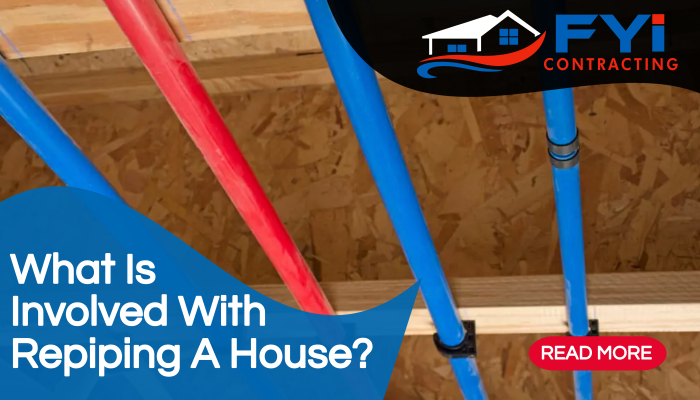
What is involved with repiping a house?
Repiping a house is a significant undertaking that can improve the functionality and safety of your home’s plumbing system. Whether you’re dealing with old, corroded pipes or frequent leaks, investing in repiping can save you money in the long run and provide peace of mind. In this comprehensive guide, we’ll explore what’s involved in repiping a house and why it’s essential for maintaining a healthy living environment.
Understanding the Need for Repiping:
Over time, pipes can deteriorate due to various factors such as age, corrosion, and mineral buildup. Common signs that your home may need repiping include:
- Persistent leaks and water damage
- Low water pressure
- Discolored or foul-smelling water
- Corrosion or rust on pipes
- Visible signs of deterioration, such as flaking or scaling
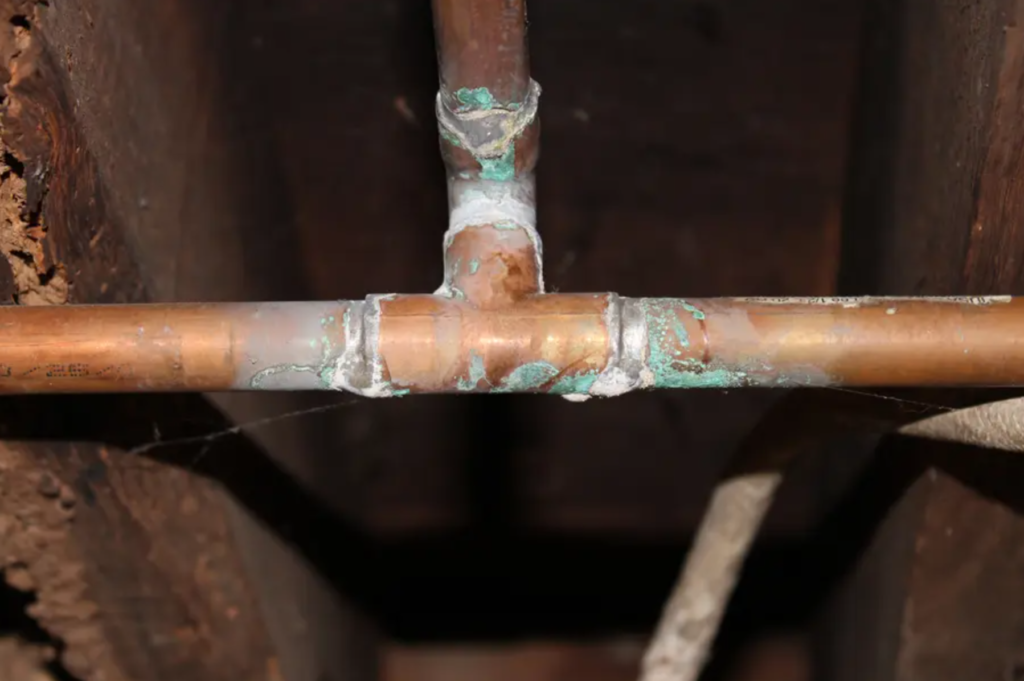
If you notice any of these issues, it’s crucial to address them promptly to prevent further damage to your home and ensure the safety of your family.
Assessment and Planning:
The first step in repiping a house is to conduct a thorough assessment of the existing plumbing system. A professional plumber will inspect the pipes, identify any problems, and determine the extent of the repiping required. This assessment may involve:
- Checking the material and condition of existing pipes (e.g., copper, galvanized steel, PEX)
- Identifying any leaks or damage
- Assessing the layout of the plumbing system
- Evaluating the water pressure and flow rate
Based on the assessment, the plumber will develop a repiping plan tailored to your home’s specific needs. This plan will outline the scope of work, materials required, and estimated timeline for completion.
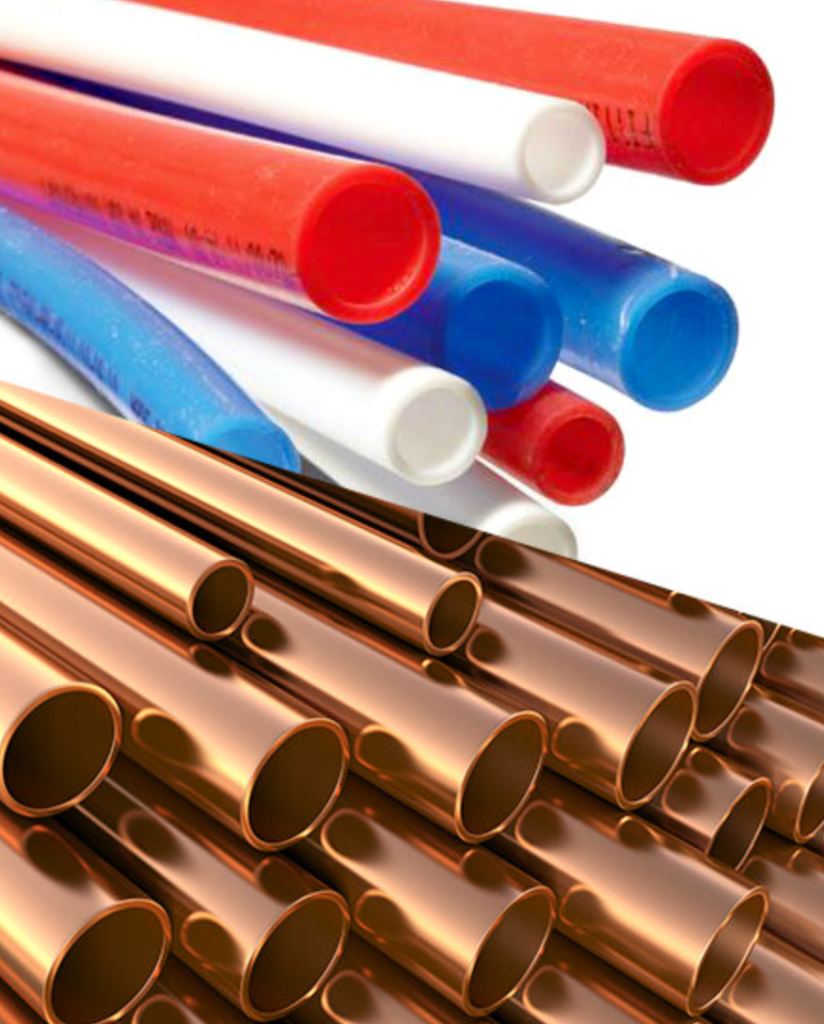
Choosing the Right Materials:
When repiping a house, you have several options for pipe materials, each with its pros and cons:
- Copper: Durable, resistant to corrosion, and long-lasting. Copper pipes are often the preferred choice for repiping projects, although they can be more expensive than other materials.
- PEX (cross-linked polyethylene): Flexible, easy to install, and resistant to corrosion and freezing. PEX pipes are an excellent alternative to copper and are becoming increasingly popular in repiping projects.
- CPVC (chlorinated polyvinyl chloride): Lightweight, inexpensive, and resistant to corrosion. CPVC pipes are commonly used in residential plumbing systems, particularly for hot water lines.
Your plumber will help you select the most suitable material for your repiping project based on factors such as budget, local building codes, and the specific needs of your home.
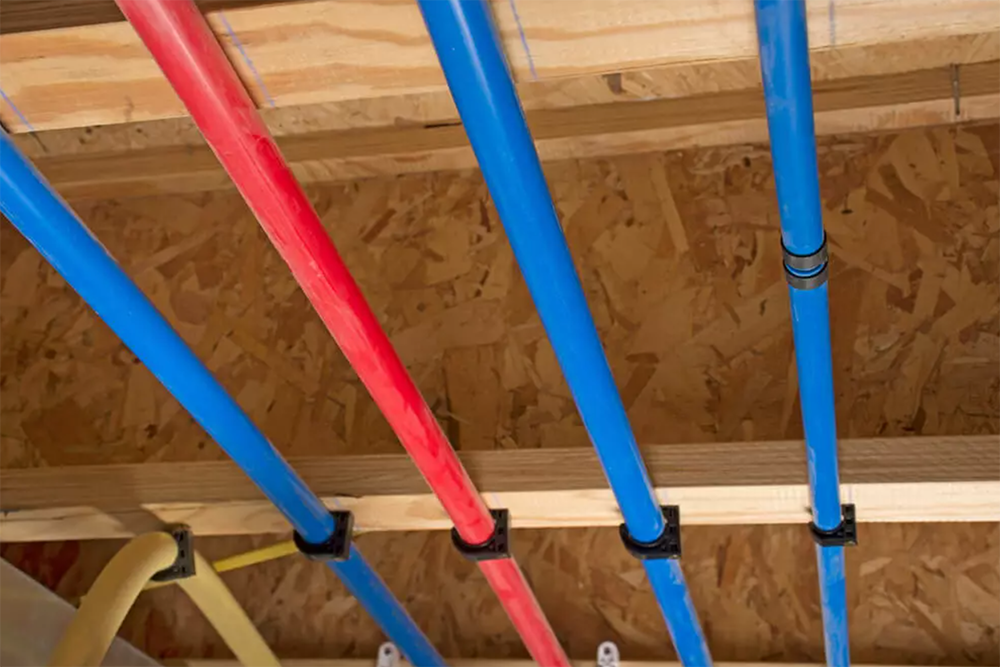
The Repiping Process:
Once the assessment is complete and materials have been chosen, the repiping process can begin. Here’s an overview of what’s involved:
- Preparation: The plumber will shut off the water supply to the house and drain the existing pipes to prepare for removal.
- Pipe Removal: Old pipes will be removed carefully to minimize damage to the surrounding structure. This may involve cutting away drywall or accessing pipes through crawl spaces or attics.
- Installation: New pipes will be installed according to the repiping plan, ensuring proper sizing, routing, and connection to fixtures and appliances.
- Testing: Once the new pipes are in place, the plumber will conduct pressure tests to ensure they are watertight and free from leaks.
- Restoration: Any areas that were opened up during the repiping process, such as walls or ceilings, will be repaired and restored to their original condition.
Benefits of Repiping a house:
Repiping your house offers numerous benefits, including:
- Improved Water Quality: New pipes can help eliminate contaminants and improve the taste and odor of your water.
- Increased Water Pressure: Repiping can restore optimal water pressure, ensuring a steady flow of water to all fixtures and appliances.
- Prevention of Water Damage: By replacing old, leaky pipes, you can prevent costly water damage to your home’s structure and belongings.
- Long-Term Savings: While repiping is an investment upfront, it can save you money in the long run by reducing the need for frequent repairs and maintenance.
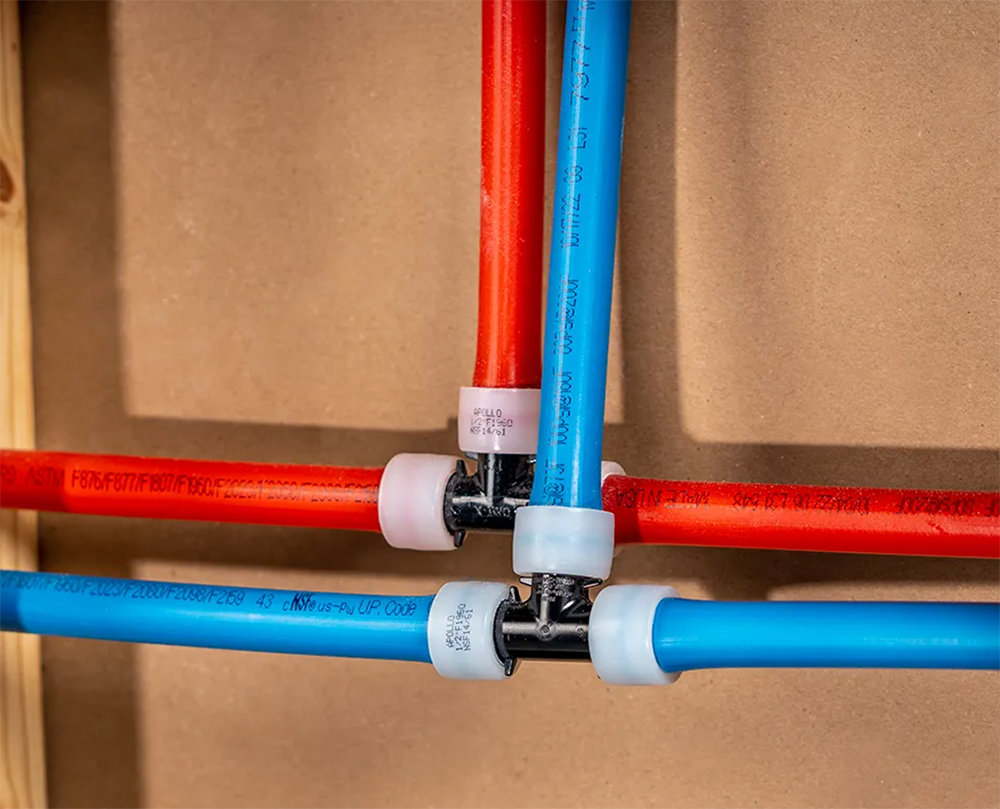
Repiping a house is a significant home improvement project that can enhance the safety, functionality, and value of your property. By understanding the process involved and working with a reputable plumber, you can ensure a successful repiping project that provides lasting benefits for you and your family. Don’t wait until your pipes fail—take proactive steps to address any plumbing issues and invest in the long-term health of your home.
